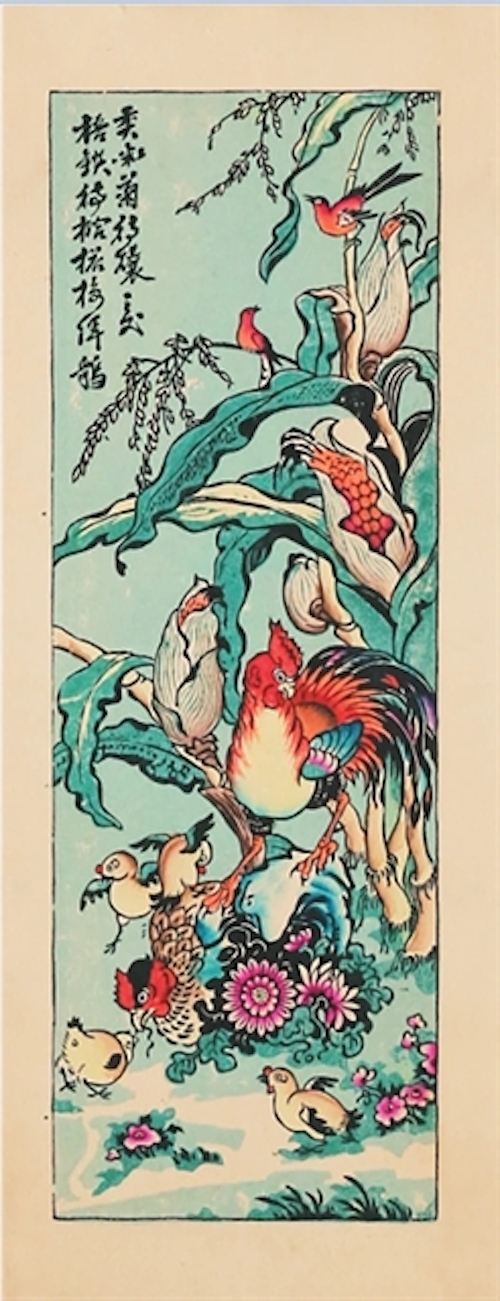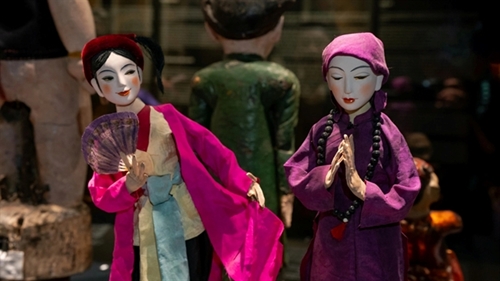This reimagined gallery not only presents artefacts in a more structured and thematic layout, but also incorporates 3D visual storytelling to enhance audience engagement. The addition of film installations offers visitors a more vivid and immersive understanding of the objects on display.
    |
 |
|
A panel featuring corn from a four-part painting series illustrating Vietnam’s staple crops: rice, corn, sweet potatoes and cassava (Photos courtesy of the Vietnam Museum of Fine Arts) |
The museum’s previous applied and folk art sections featured more than 500 items. Under the new format, the collection has been streamlined to roughly 200 carefully selected pieces. While the physical footprint has been reduced, this intentional edit sharpens the exhibition’s focus and improves narrative clarity.
A central highlight is a set of four-panel paintings depicting rice, corn, sweet potatoes and cassava – now paired with a short 3D animation that traces scenes of Vietnamese agricultural life: rice sprouting and ripening, corn ears maturing, chicks foraging and birds returning to harvest fields. These pastoral sequences are brought to life with a contemporary digital touch, before folding into the familiar stylistic frame of Dong Ho folk art, a UNESCO-recognized intangible heritage.
“This display is designed to tell stories,” said head of exhibition Vuong Le My Hoc. “Artefacts will be rotated over time, and those not shown will remain accessible through on-site digital archives.”
According to Hoc, the 3D animation was inspired by an unexhibited Dong Ho series portraying the four seasons through native crops.
“Vietnamese four-panel paintings are often influenced by Chinese aesthetics. But this particular set, featuring rice, corn, cassava and sweet potatoes, felt distinctly Vietnamese, which is why we chose to animate it. Other works, like those featuring court ladies playing instruments, remain available digitally.”
The revamped space includes traditional costumes, jewelry, musical instruments, tools, weapons, household items and children’s toys representing various ethnic communities. Together, they showcase both the uniqueness of Vietnam’s indigenous cultures and their historical interaction with Eastern and Southeast Asian influences.
Folk paintings from genres like Dong Ho, Hang Trong and Kim Hoang are on view, along with religious and ceremonial pieces from the Dao, Cao Lan, Tay and Nung communities. Sculptural works range from domestic and agricultural scenes to mythological narratives, sourced from craft hubs such as Bat Trang pottery village and the Truong Son–Central Highlands region.
    |
 |
|
Dolls dressed in traditional costumes of characters from the classic cheo opera Quan Am Thi Kinh (The Tale of Lady Thi Kinh). |
Curatorial choices emphasize contextual storytelling – pairing, for instance, Mother Goddess worship paintings with ceremonial paper offerings to illuminate their ritual meaning. Visitors are invited to explore both familiar and lesser-known cultural narratives: the making of butterfly buttons in Thai clothing, the curvature of traditional bamboo sandals or the costumes worn by characters in the classic cheo (traditional opera) Quan Am Thi Kinh (The Tale of Lady Thi Kinh).
Source: VNA